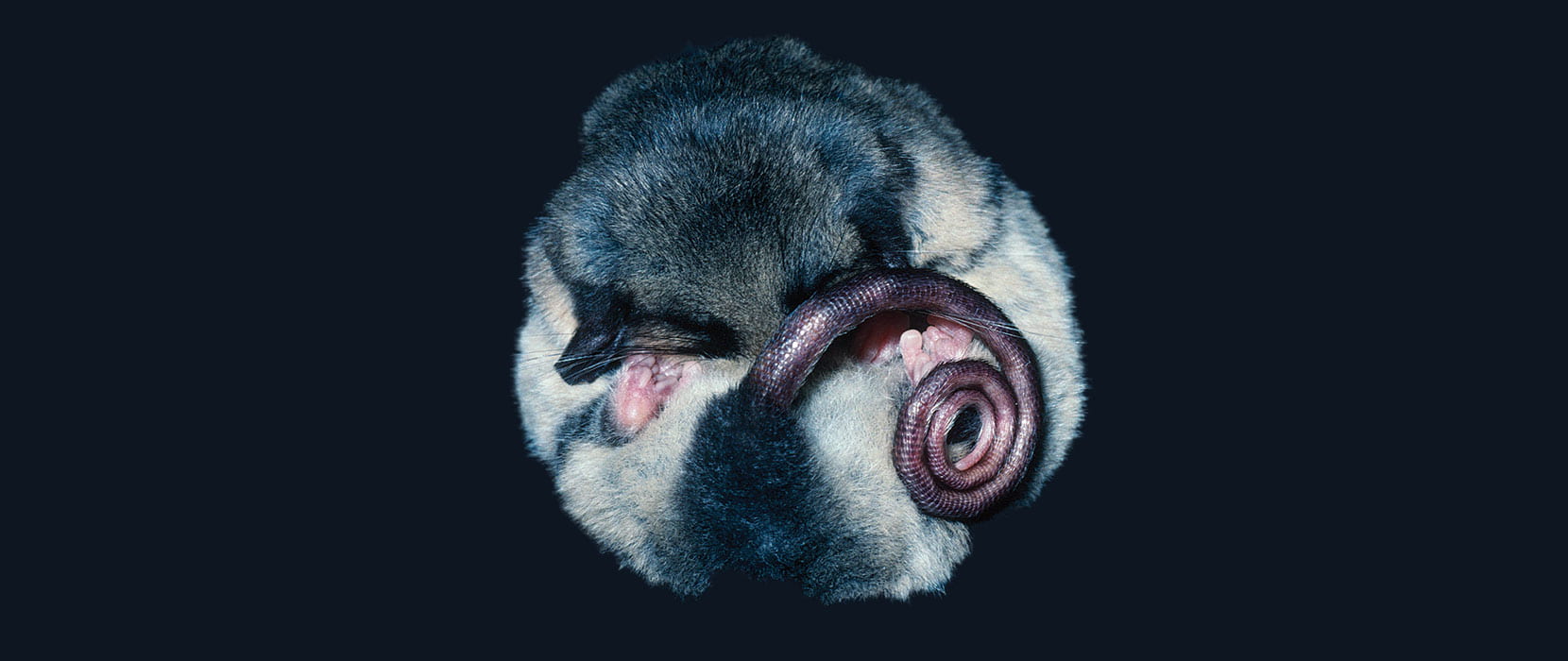The species was long considered to be exthinct and was only known from fossil jawbones found at Wombeyan Caves in NSW. However, it was re-discovered in 1966, about 70 years after its first description from fossil material, in a ski hut on Mount Higginbotham, Victoria.
Professor Fritz Geiser
Madgwick Distinguished Professor of Zoology, School of Environmental and Rural Science.
Pygmy-possums are small marsupial mammals, endemic to Australia and Papua New Guinea. The five species are distributed from the tropics to Tasmania and the species with the widest distribution ranges are the eastern (south–east coast and ranges) and the western pygmy-possum (southern WA and SA). Pygmy-possums eat insects, nectar and fruits, have the ability to become very fat, and all five species use hibernation or torpor for energy conservation.
Professor Fritz Geiser, an international leader in the fields of ecological physiology, thermal biology, and specifically torpor and hibernation, discovered that at low ambient temperatures, torpid pygmy-possums lower their body temperatures to a minimum of 2-6 ºC and their minimum metabolism is reduced to approximately 1% of that during activity. The eastern pygmy-possum is capable of enormous fattening, and, when maintained at 7ºC, can hibernate for up to an entire year without access to food, which is a world record. Professor Geiser’s research further showed that even at the relatively high temperatures of 26 to 30ºC, eastern and western pygmy-possums still enter torpor, although torpor lasts only for part of the day. It therefore appears that most pygmy-possums use torpor to cope with unpredictable adverse changes in weather and food availability at any time of the year, rather than or in addition to a predictable winter.
The rare mountain pygmy-possum, Burramys parvus, the largest species of the family at a mere weight of approximately 50g, is restricted to high peaks in the Australian Alps and is our only alpine endemic mammal. In the last ice age the species had a much wider distribution range in SE Australia and 25 Million years ago it, or its ancestors, lived in lowland forests in northern Australia. The species was long considered to be extinct and was only known from fossil jawbones found at Wombeyan caves in NSW. However, it was re-discovered in 1966, about 70 years after its first description from fossil material, in a ski hut on Mt Higginbotham, Victoria. The remaining population lives in deep boulder fields, where it feeds predominantly on Bogong moths in summer, supplemented by fruits and seed of the mountain plum-pine and other plants for pre-hibernation fattening. In winter it eats little or nothing and lives on accumulated fat. Professor Geiser found that hibernation in this species is more seasonal than in the other species. The hibernation season begins in late autumn (April/May) with the departure of Bogong moths from the Australian Alps and lasts until the snow melts in spring September/October. As in many other hibernators, reproduction commences immediately after the hibernation season, and in order to increase mating success, males, which often hibernate on north-facing sun-exposed slopes, and emerge from hibernation before females.
With only about 2,000 mountain pygmy-possums remaining in Australia, this species is now threatened by two major events that are in part caused by humans. The first threat is related to changing climatic conditions, with the mountain pygmy-possum particularly vulnerable, as Professor Geiser explains, with its pattern of hibernation and energy expenditure being strongly temperature-dependent. At the 2°C they experience in the snow-covered boulder fields, energy expenditure during hibernation is lowest, whereas at temperatures below and above this it increases substantially. Exposure to higher and lower temperatures, caused by lack of snow cover, will increase energy expenditure and result in premature depletion of body fat stores well before spring. As winter mortality in the species is already high, a change in climate is likely to have a detrimental impact on their hibernation pattern and thus winter survival.
A new threat to the species is a reduction in Bogong moths due to drought and insecticides, which will hinder pre-hibernation fattening and possibly will drive the species to extinction. Potentially another tragic loss, adding to the list of species that have become extinct in Australia since European settlement. However, captive breeding programs for its continued survival are planned, but these may need to rely on strong public interest and support to secure the required long term commitments.
[Top banner photo by Prof. Fritz Geiser, UNE. Note the animal has been turned aournd to show the position of appendages.]


